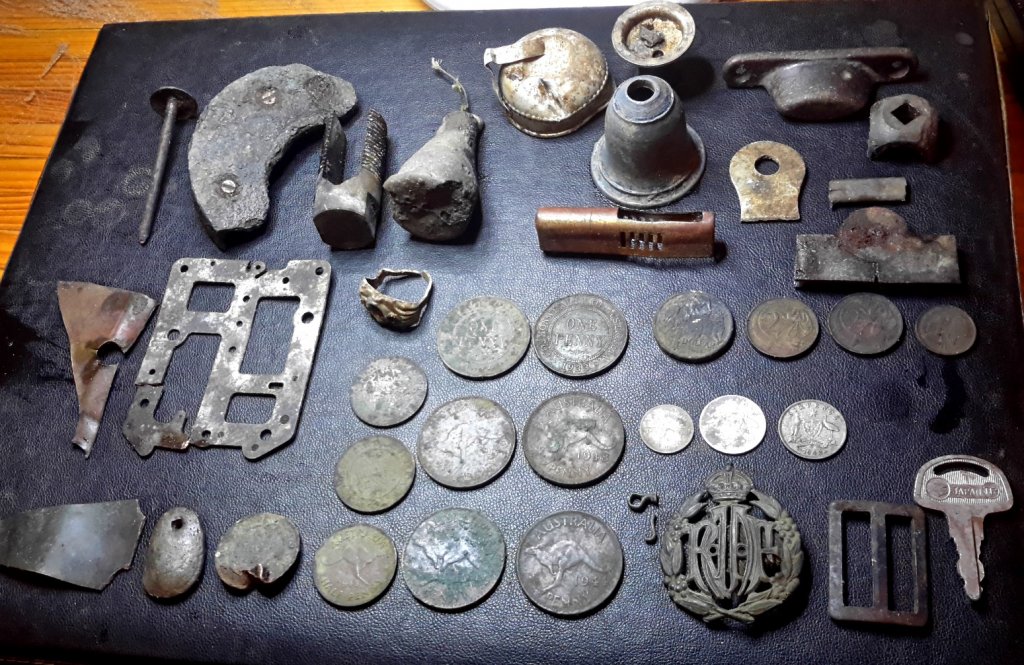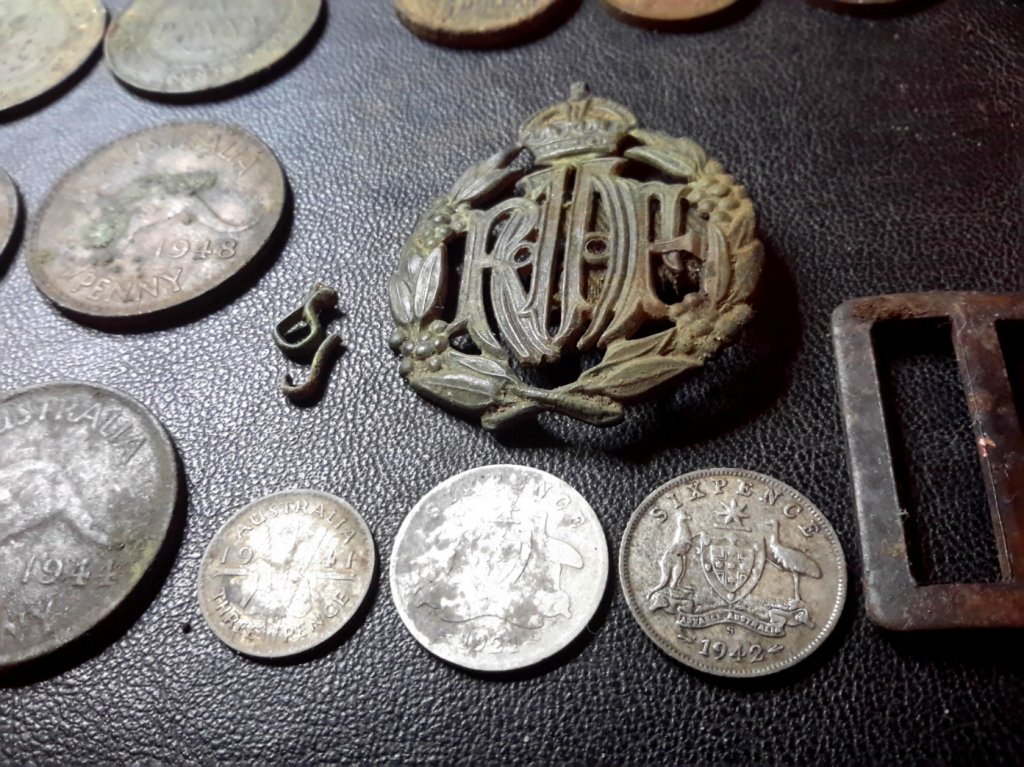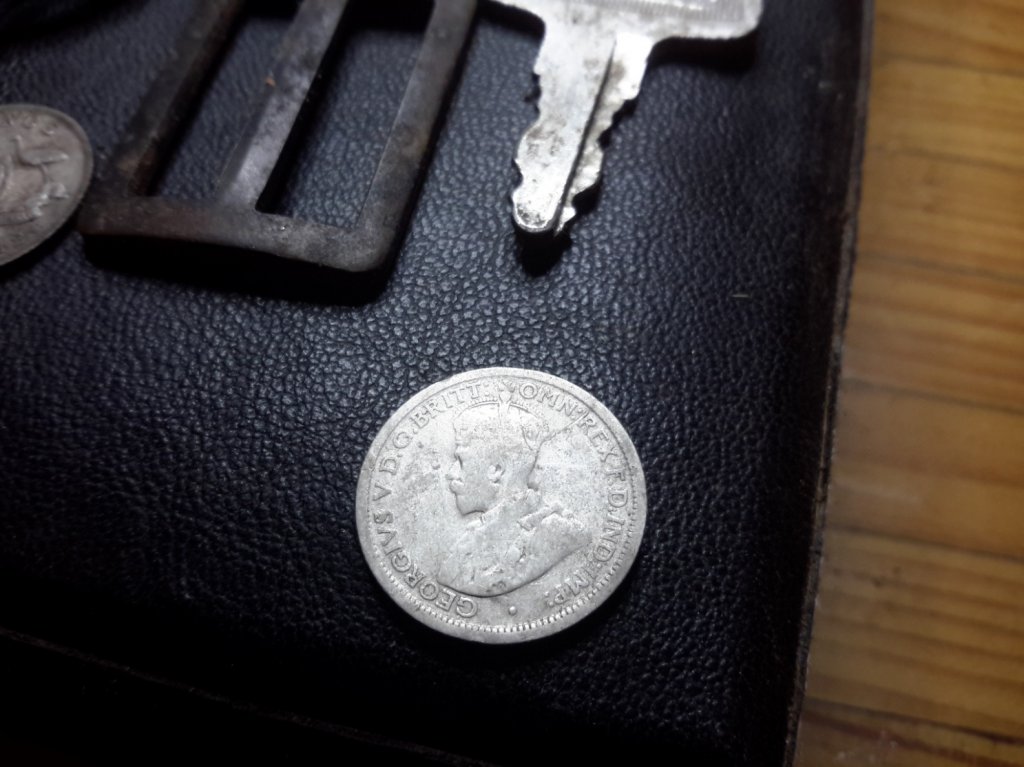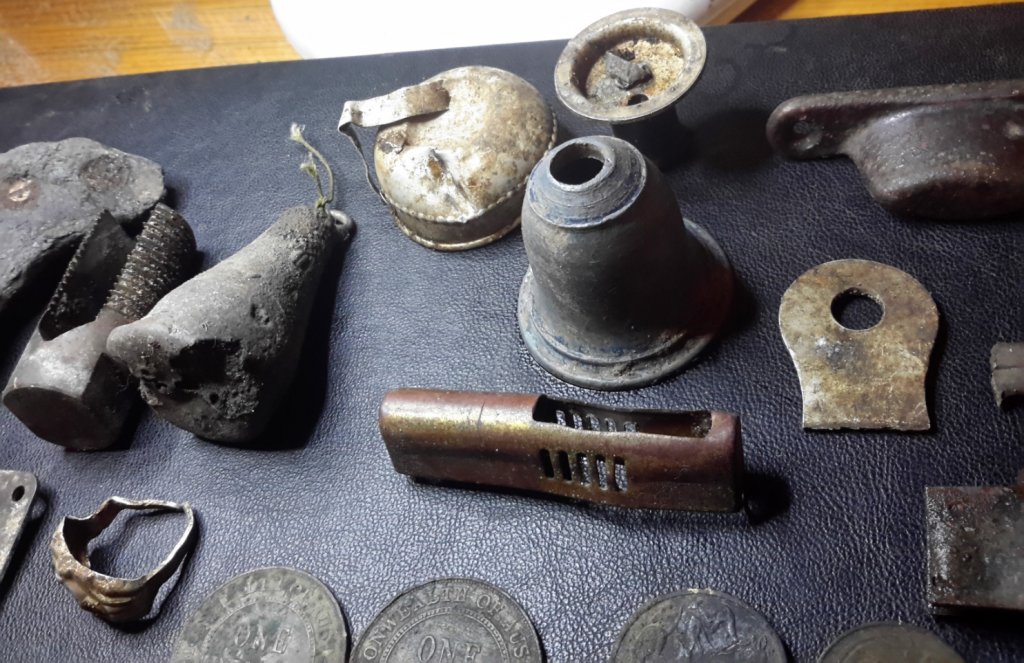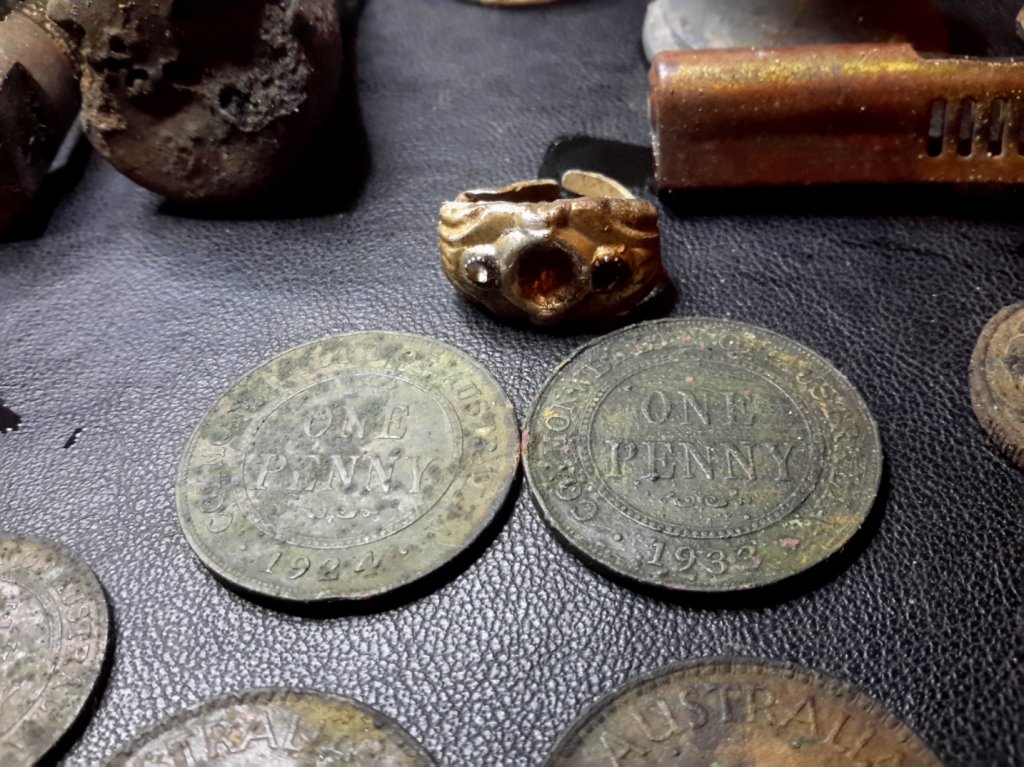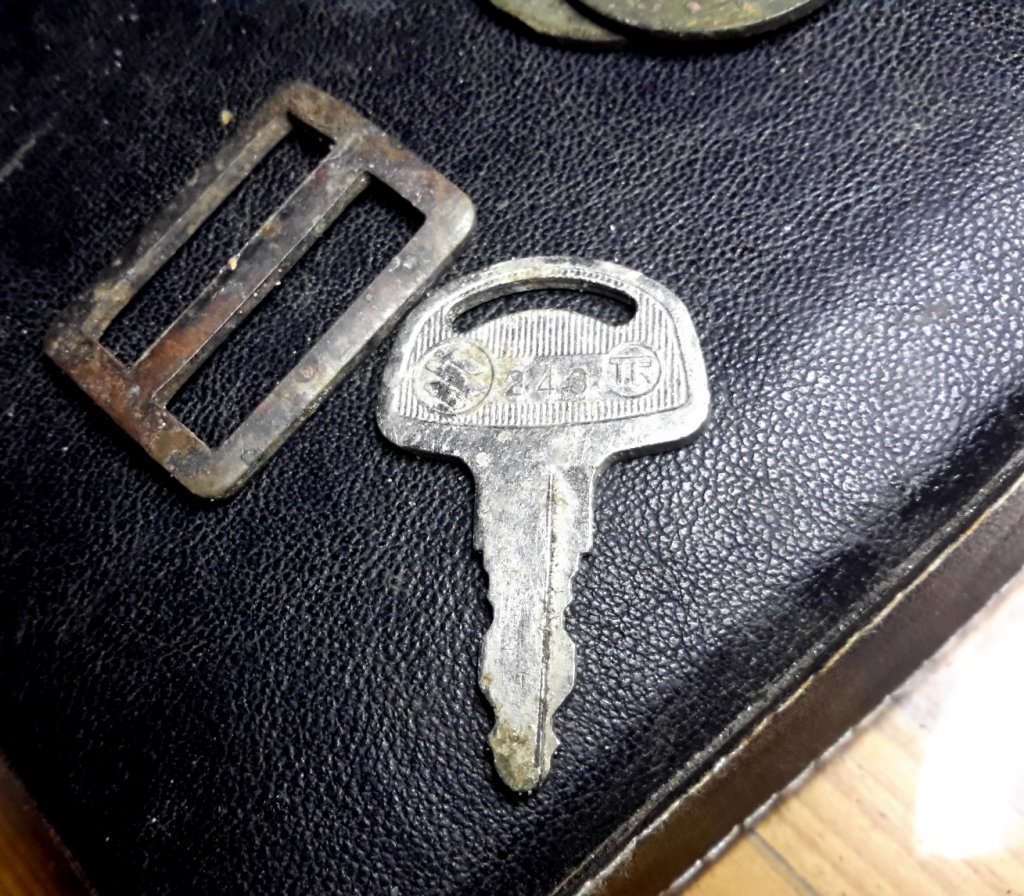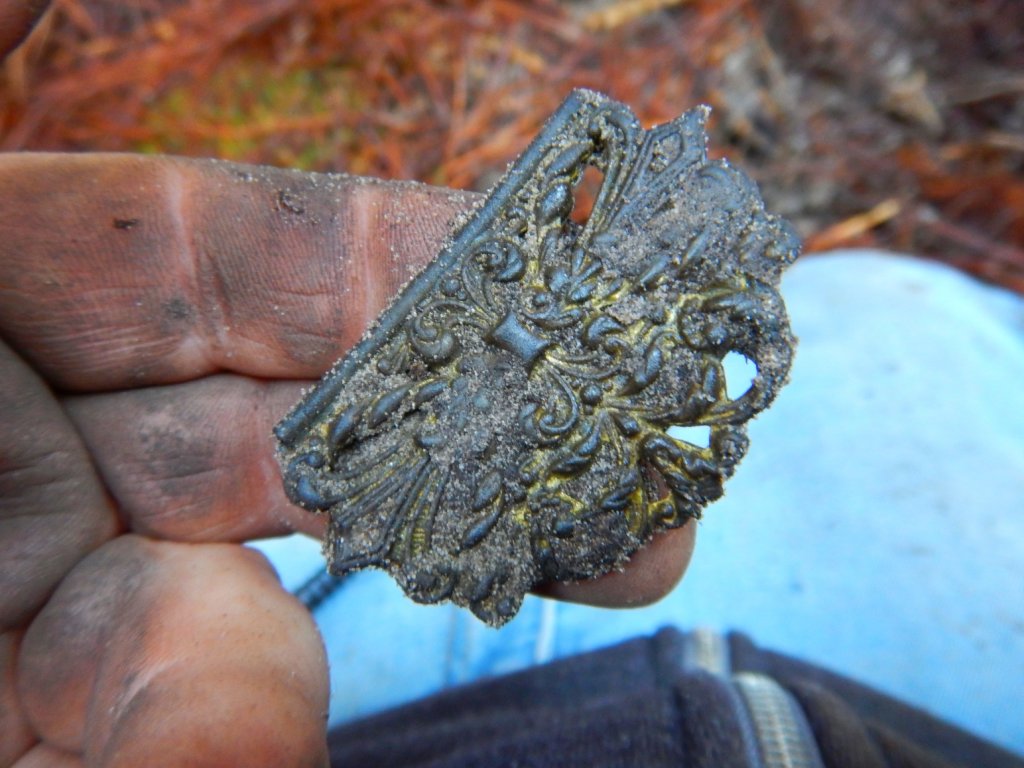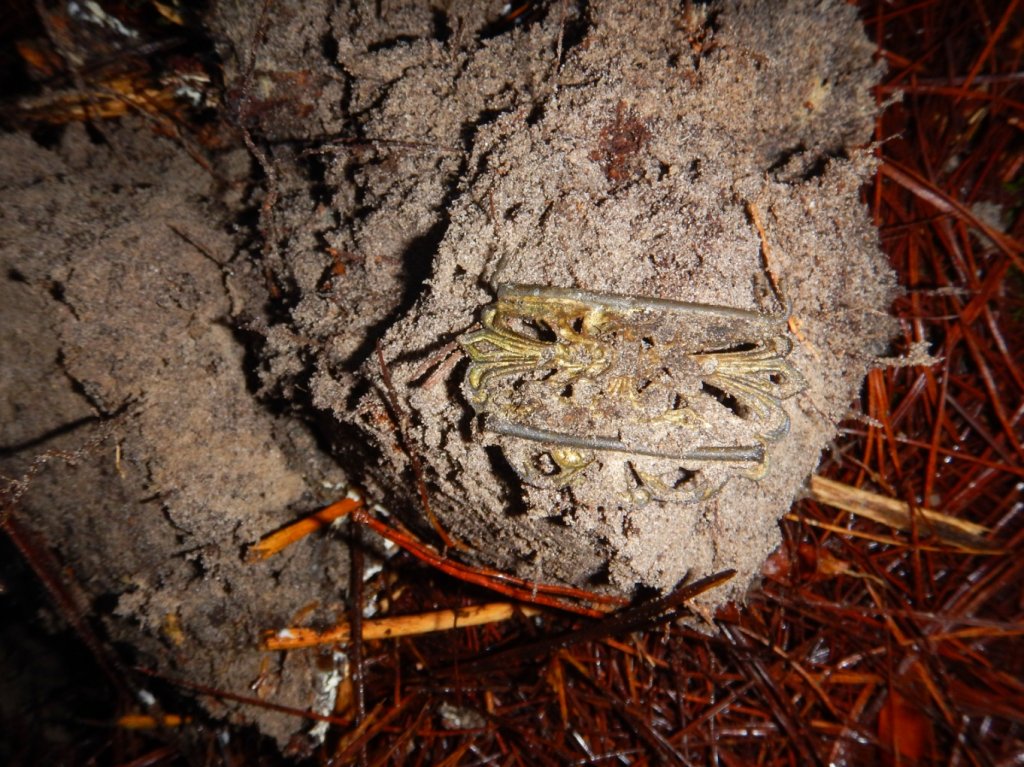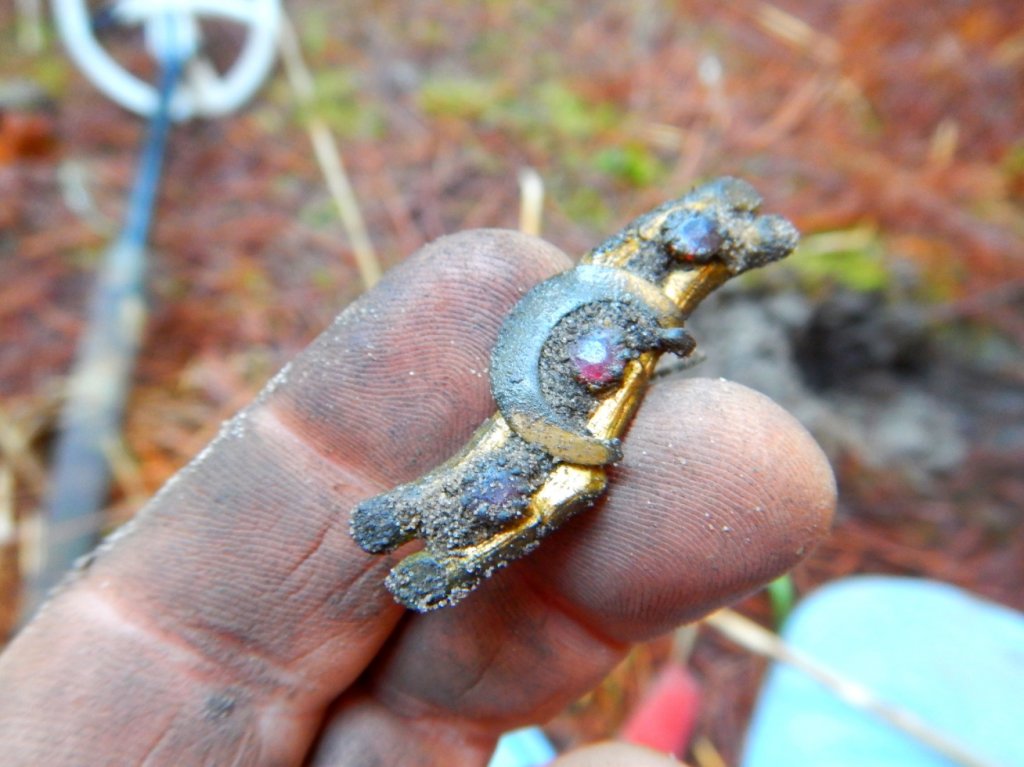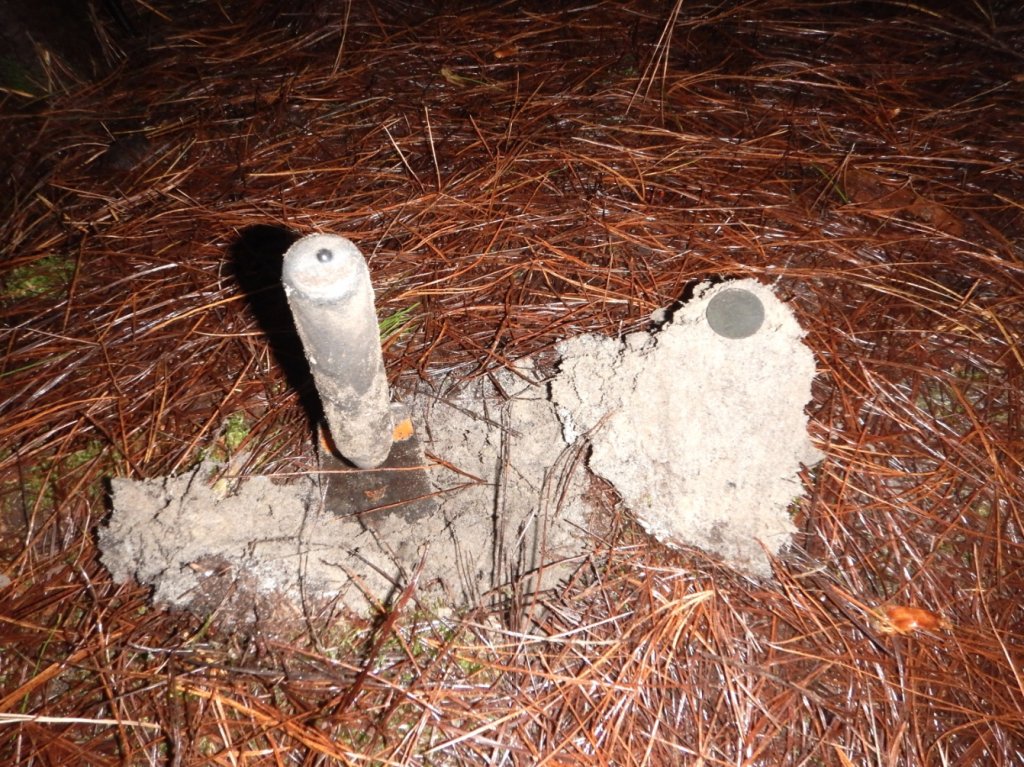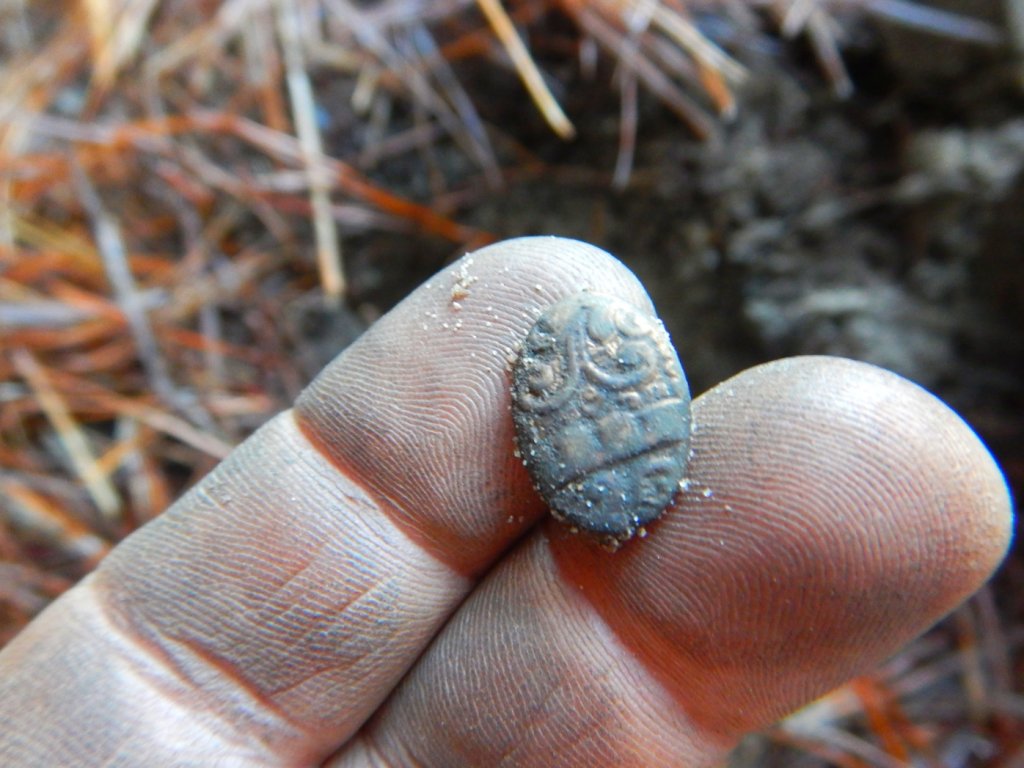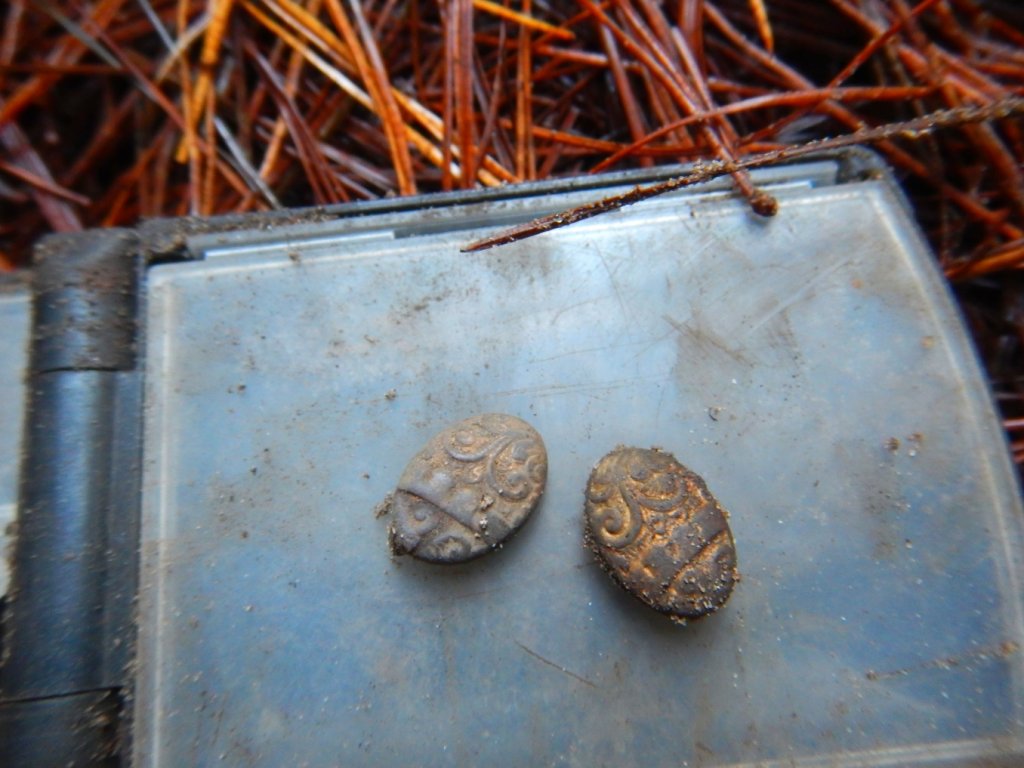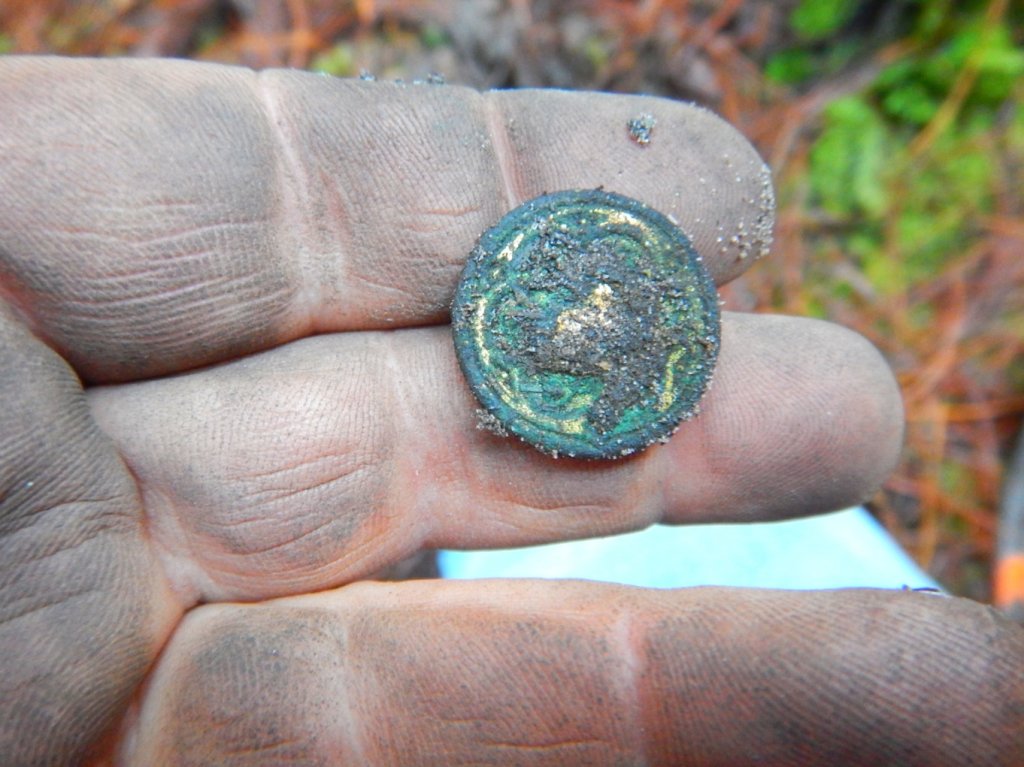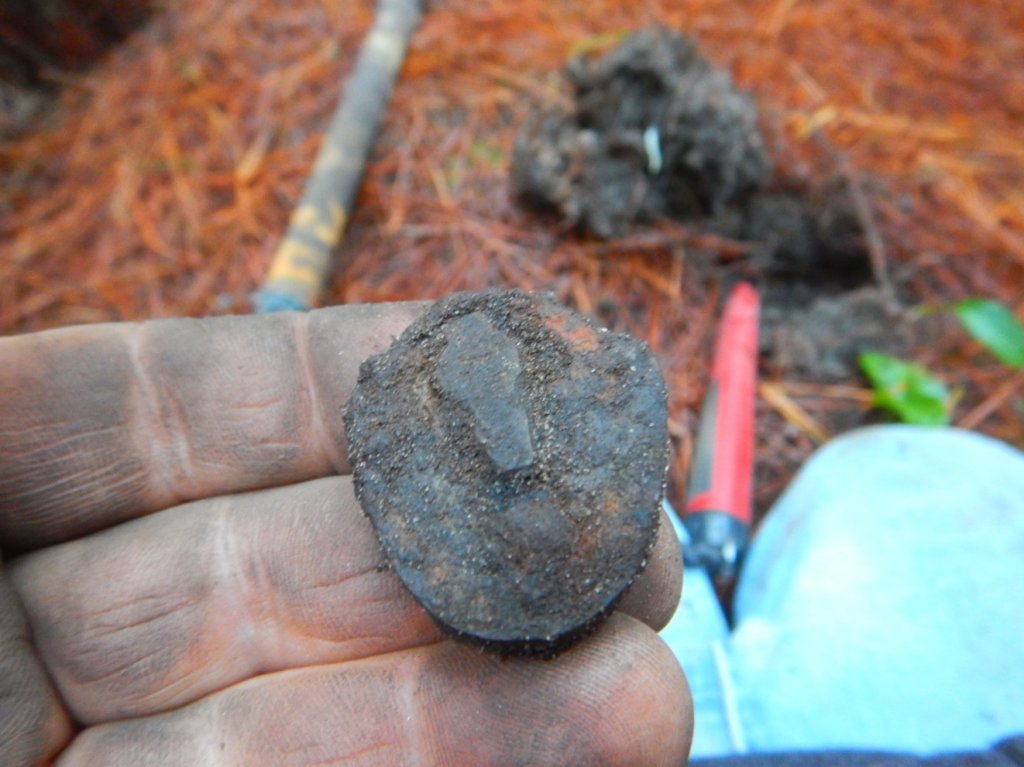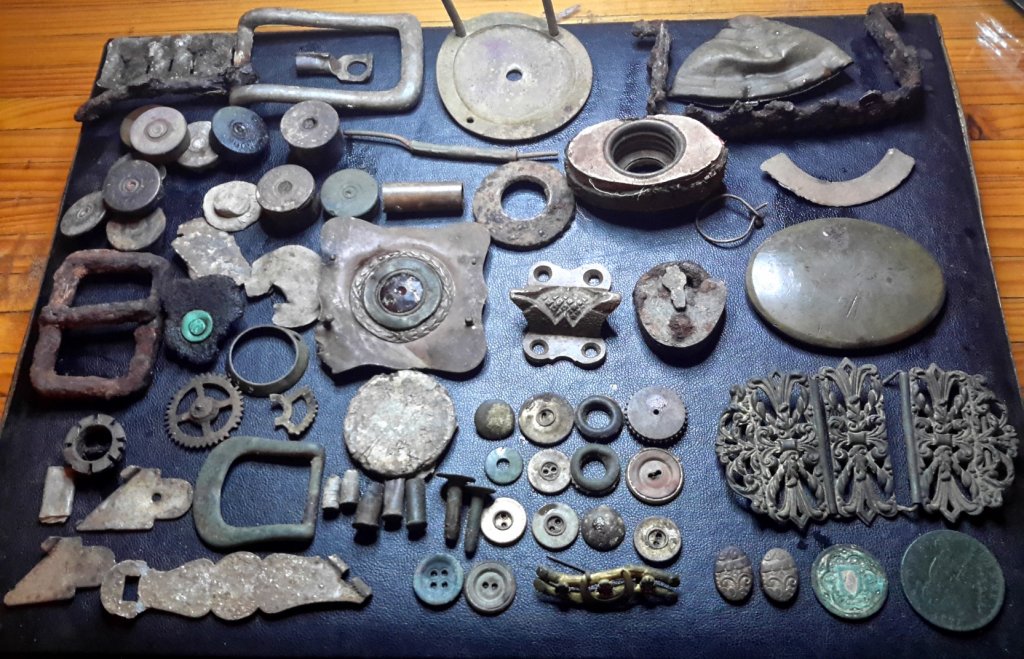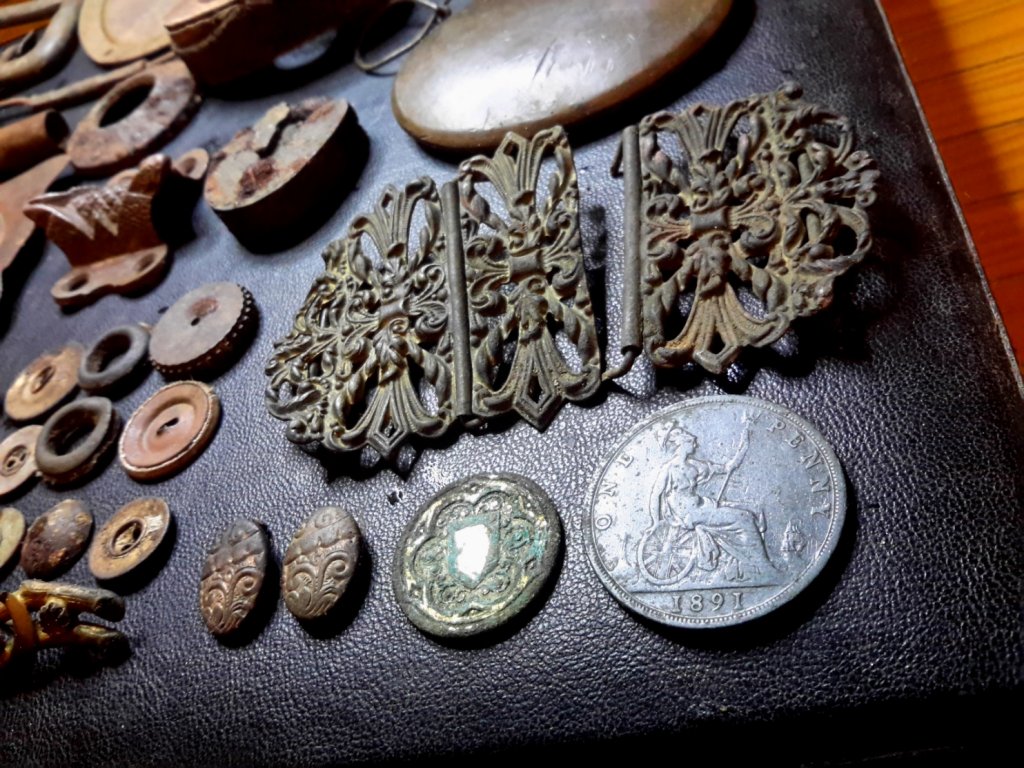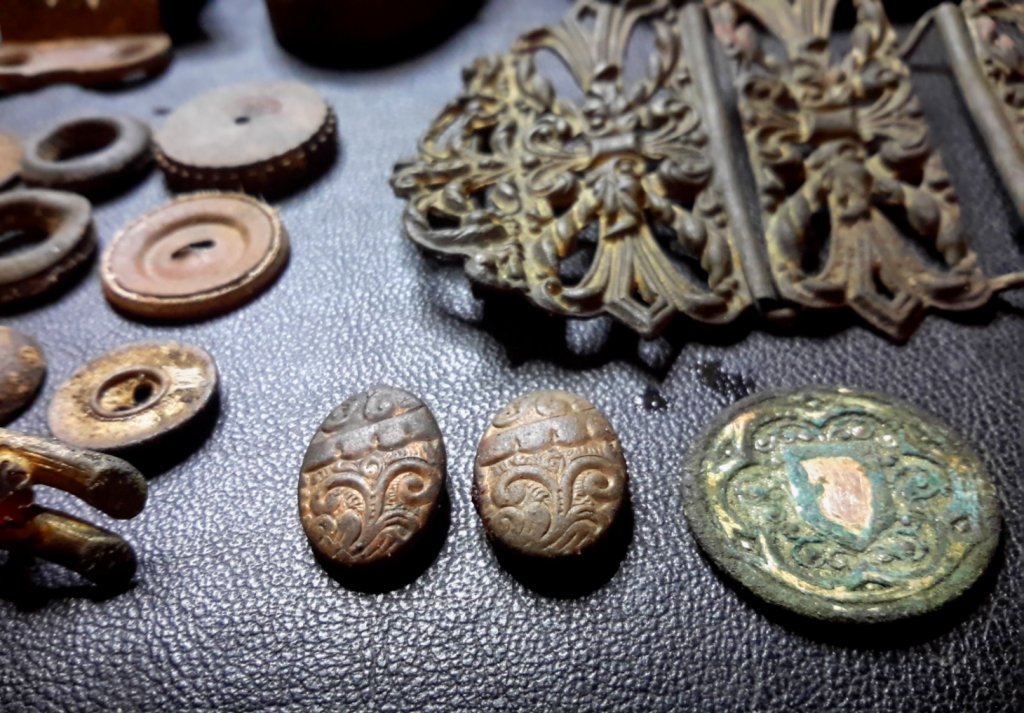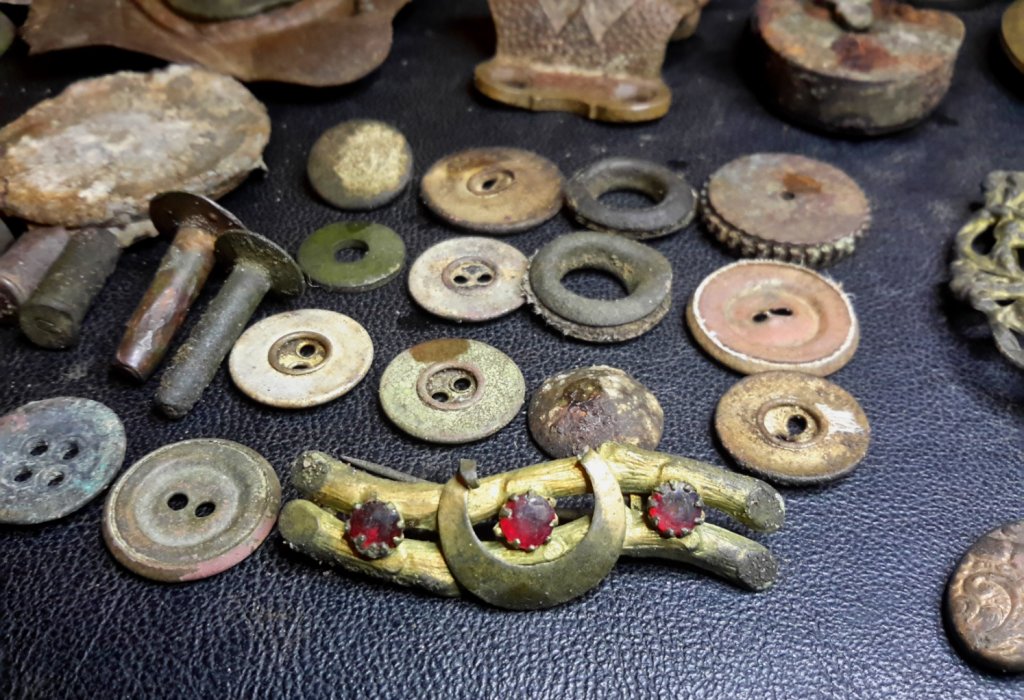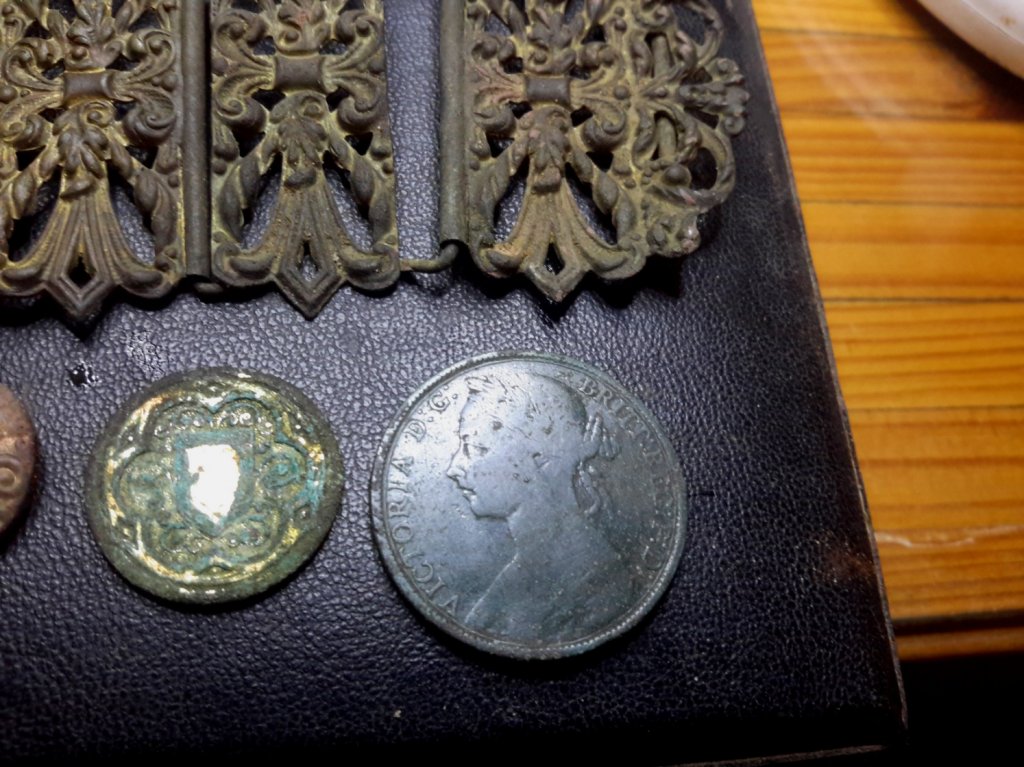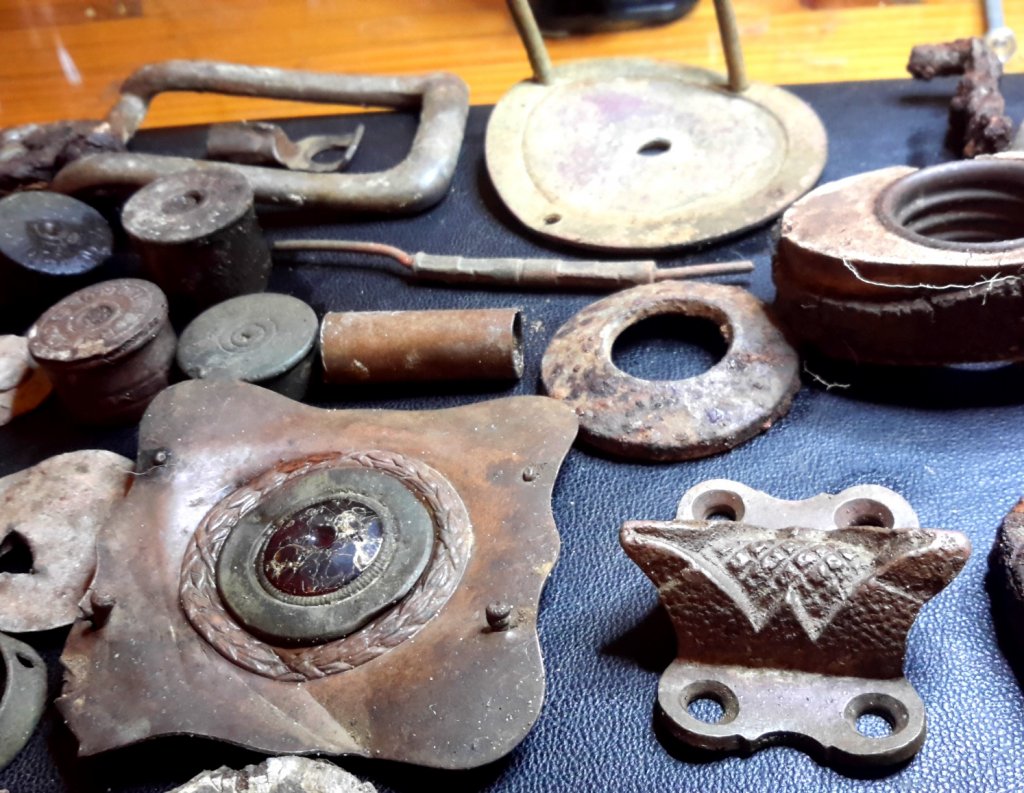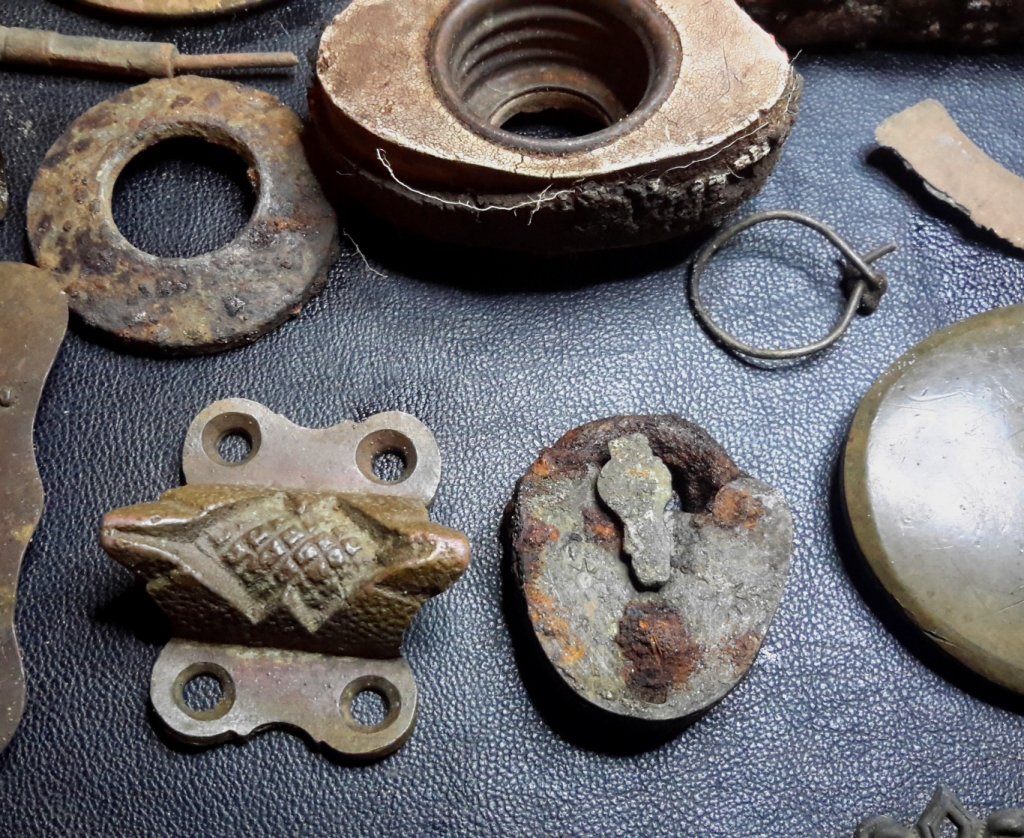Ok, today was the first cab off the rank for trying out pitch program to see if more finds could be liberated from a well detected site - being an 1800's house site where an 1840 farthing was found, amongst other goodies. Must say I was pretty astonished at how well it performed, anything that came up as non-ferrous was dug, most iron was discriminated out and large iron was pretty easy to avoid from the tonal info. This site has been pretty hard to detect in the past due to the amount of iron layered throughout the ground - nails, roofing, car parts and machinery causing most of the mayhem.
One particular section of ground provided the 1891 Vic penny, gilt buckle and gilt pendant, and a further 10 metres on the cool buckle with the red "gem" in the centre. The pair of gilt cufflinks came out of two separate holes within a foot of each other, both deep soft tones. Also couldn't believe the amount of buttons still in the ground, some were quite deep and mixed in with iron targets.
Later on produced the first padlock for the site, quite a small brass one encrusted in rust which I manged to pick away at for the pics.
This was running the HF coil on 14kHz on the HOT program with tones changed from fulltones to pitch, reactivity set at 2.5 for the quieter areas, and 3 for the iron infested sections - discrimination set at 10. The result is a very quiet running Deus, hearing nothing but non-ferrous and the occasional high tone large iron creeping through, though easy to identify. Pitch takes the guess work out of deciphering whether a target is a digger or not vs hearing a barrage of "maybe" diggers in fulltones - targets seem to be a lot more clear cut, especially if in close proximity to iron.
Running the higher frequencies next time around should hopefully help locate a few more targets in the worse sections of ground, though very happy a what 14kHz found.
Hope you enjoy the pics.



